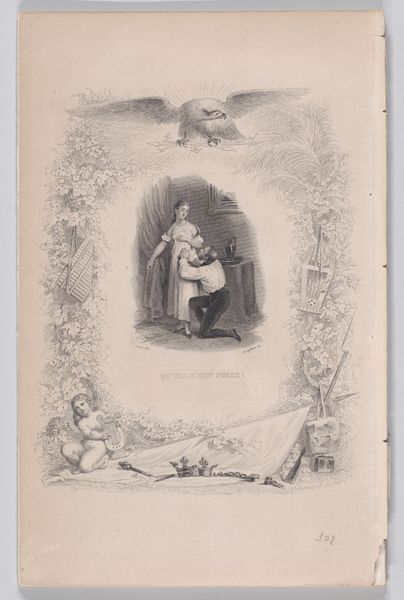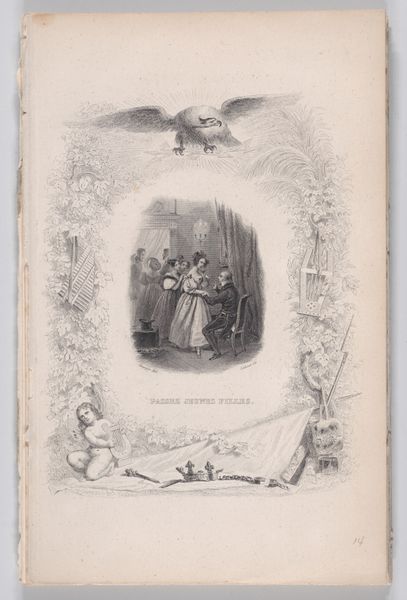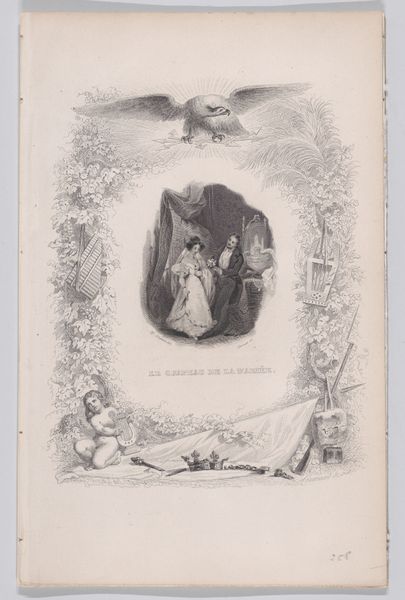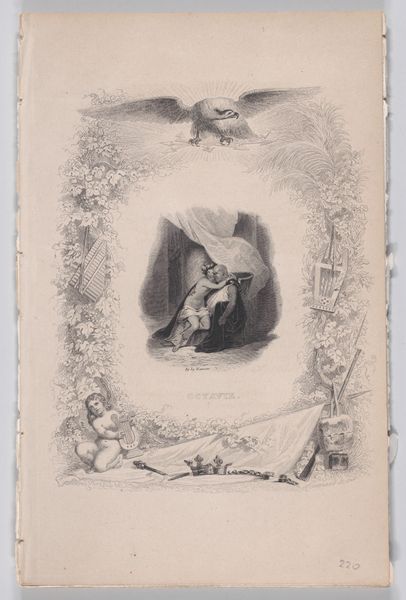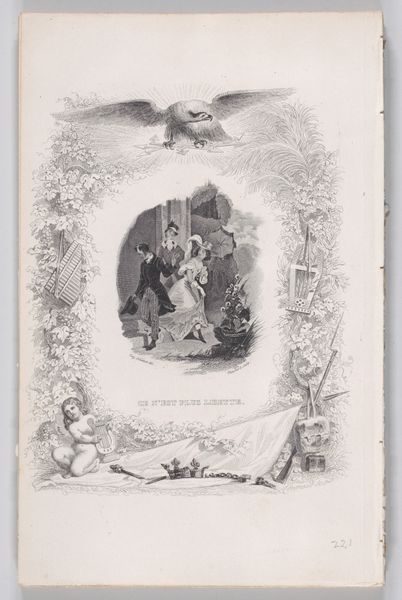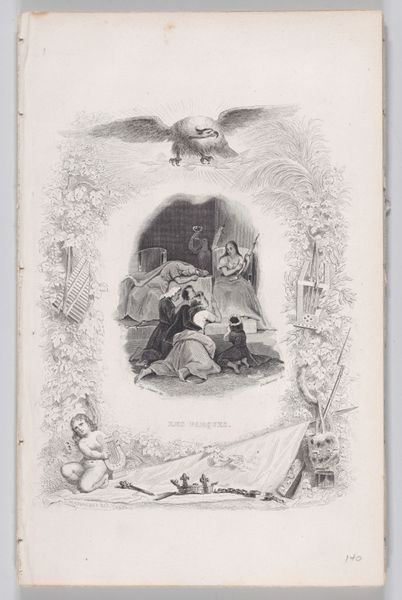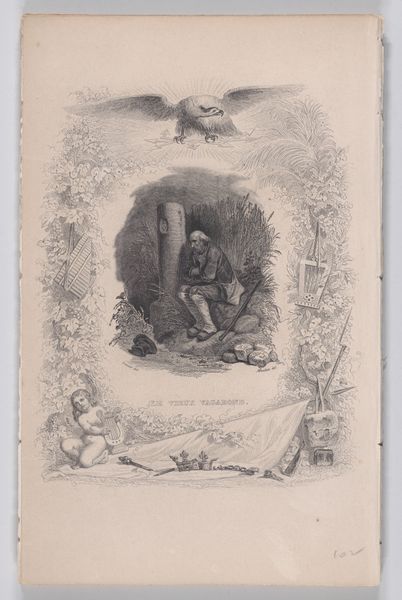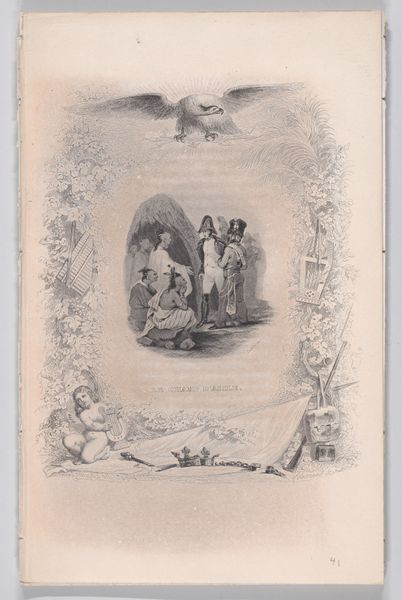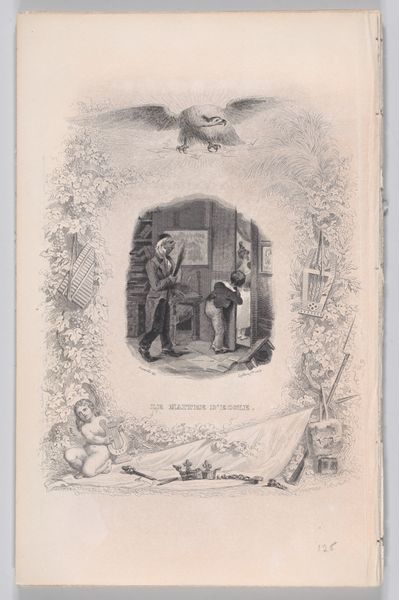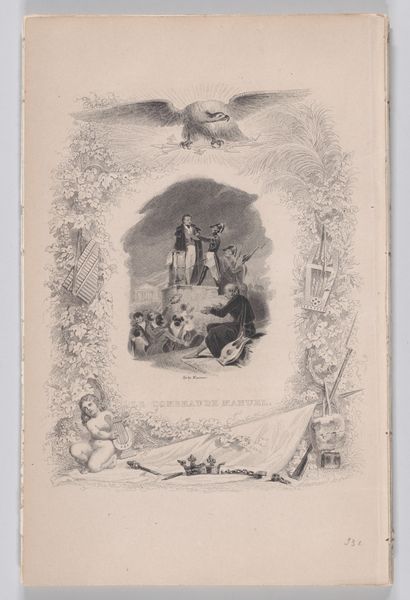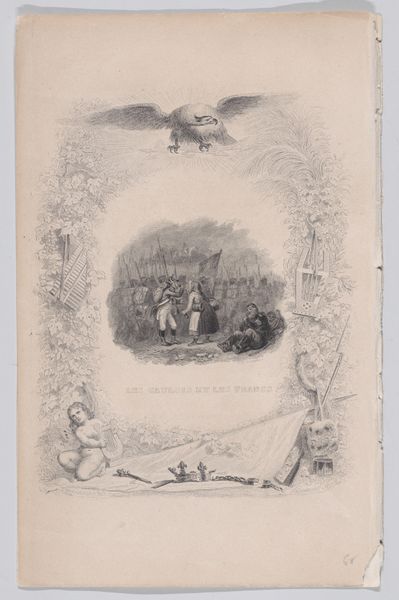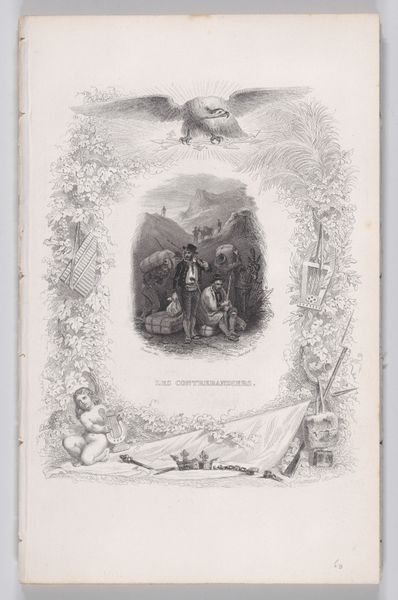
drawing, print, engraving
#
drawing
#
narrative-art
# print
#
romanticism
#
line
#
history-painting
#
engraving
Dimensions: Sheet: 8 5/8 × 5 1/2 in. (21.9 × 14 cm)
Copyright: Public Domain
Auguste Raffet made "The Relics," from The Songs of Béranger, using etching and engraving. These are intaglio processes, where an image is incised into a metal plate, and then filled with ink to make a print. The linear precision of this method is crucial to the artwork’s impact. Raffet could create infinite gradations of tone, and render precise textures of the skeletons, and the relics surrounding it. The method he used can tell us something about its social context. Etching and engraving were the workhorses of the print industry at this time, used to mass produce images for books, newspapers, and magazines. It’s a process that can be industrialized, creating powerful visual statements intended for wide circulation. The choice of this process is also significant as it directly reflects a democratizing impulse, and can be contrasted with the tradition of fine art prints intended for elite consumption. We should appreciate this artwork not only for what it represents but also for how its mode of production enabled a broader reach.
Comments
No comments
Be the first to comment and join the conversation on the ultimate creative platform.
